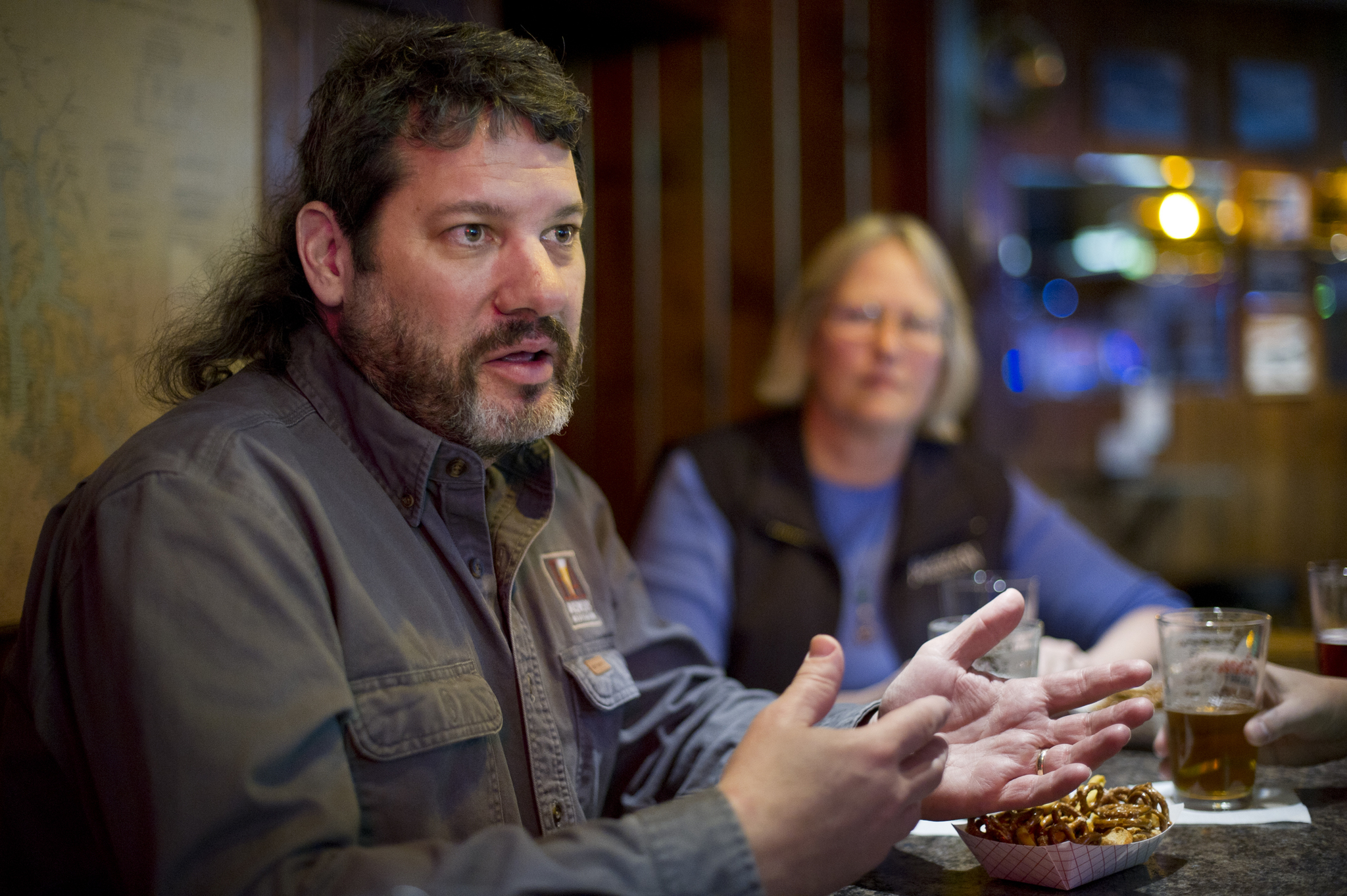In 1986, Alaska was in the middle of a cataclysmic recession. Geoff and Marcy Larson decided it was the perfect time to open a brewery.
Today, the brewery they opened — Alaskan Brewing Co. — is the 22th largest craft brewery in the United States and the largest manufacturer within the City and Borough of Juneau.
As Alaska again dips into a recession, one that might be deeper than the “oil bust” of the 1980s, beer brewing is one of the few bright spots in the state economy.
“People drink during good times. They drink during bad times. They drink when things are so-so,” said Paul Gatza, director of the Brewers Association, the trade organization for small breweries in the U.S.
Gatza visited Juneau last week, en route to AK Beer Week celebrations in Anchorage.
“One of the things that I’ve heard is that if you’re not from Alaska, you’re not going to sell beer in Alaska, that out-of-state brewers are not selling a lot of beer right now,” Gatza said.
The statistics back him up — to a point.
According to an advance copy of the 2016 annual report published by the Alaska Tax Division, Alaskans bought 4.16 million gallons of beer from 29 active breweries last year.
That’s up from 3.95 million gallons in 2015, 3.86 million gallons in 2014, and 3.62 million gallons in 2013.
“The breweries … are telling you the truth,” said Ryan Makinster, executive director of the Brewers Guild of Alaska, the state trade association. “They’re probably not feeling the recession. The taxable gallons and the taxable revenue have increased.”
The tax division doesn’t provide separate statistics for beer imported from the Lower 48 or internationally; it’s recorded with malt liquor and cider, which makes it difficult to determine whether domestic Alaska beer or imports are more popular.
If Alaskan beer isn’t more popular than imports, that may change quickly.
In addition to the 29 active breweries in Alaska, seven more have state licenses and are waiting to open.
“I think we’re going to continue to grow,” Makinster said. “Look at those seven in planning. I think two or three are about ready to open.”
In 2015, Alaska breweries employed 1,436 people statewide, a relatively small proportion of the 339,000 nonfarm jobs in the state that year, but what makes the industry relevant is what economists call the “multiplier effect.”
In a presentation to the Alaska Senate Labor and Commerce Committee on Wednesday, Mouhcine Guettabi of the Institute of Social and Economic Research told lawmakers that not all spending is created equal.
If someone goes into a store and buys a product manufactured Outside, it doesn’t boost the economy very much. Some of the price of the item will pay for the wages of the person selling the item, but most of the money flows Outside.
Because Alaska’s breweries are manufacturers, the money stays in Alaska, paying wages and buying goods. That means in-state manufacturers, like breweries, have an economic impact out of proportion to their size.
In 2015, the Brewers Guild estimated that impact as nearly $200 million per year — and growing.
Nationwide, the number of breweries is growing rapidly. In 2012, there were fewer than 2,000. Today, there are more than 5,000 — with 2,000 more in permitting and licensing, according to the Brewers Association.
“I think a lot of people see a demand for local products. It’s not just breweries. It’s a whole locovore movement,” Gatza said.
That movement extends even to the streets of Juneau, where Alaskan got its start.
Two new breweries are in the works, both downtown.
Matthew Barnaby of Barnaby Brewing Co. said Friday that he’s ready to open his doors as soon as he gets a federal permit, something he expects in March.
“We’re ready to go. If we were licensed today, we’d start making beer today,” he said. “I tell everybody, our goal is to be pouring and selling beer by the first cruise ship. That’s our optimistic goal.”
Down the street from Barnaby, Ryan Lindsay, Jacob Ridle and Evan Wood are planning to open Devil’s Club Brewery in the dilapidated Palace Theater.
They’re a few months from starting construction.

